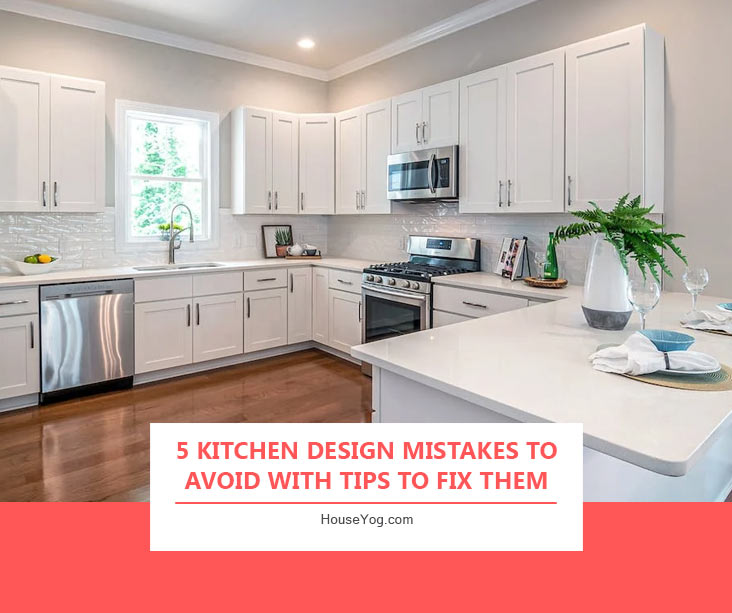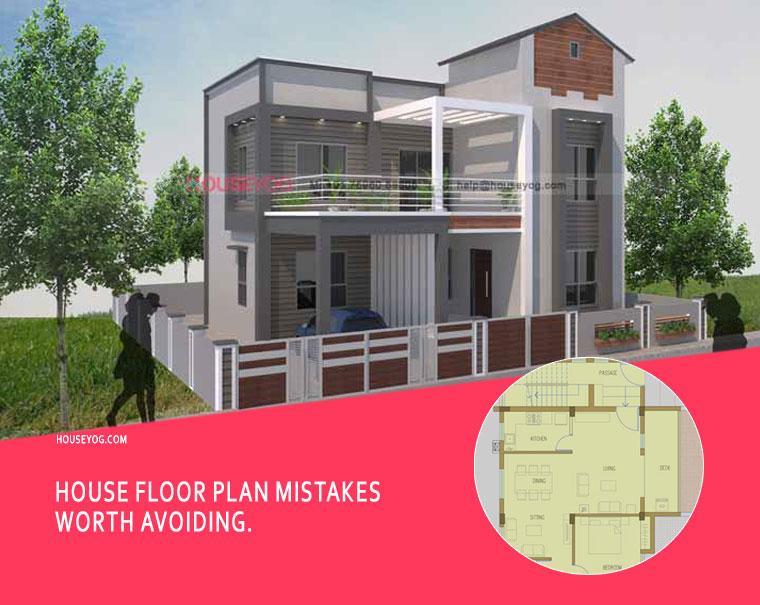Buying home insurance in India is one of the smartest financial decisions you can make—but it’s also one of the most misunderstood. According to industry data, over 60% of homeowners make at least one coverage mistake that leads to claim disputes or losses. Many believe that once they buy a policy, their home is automatically “protected.” Unfortunately, that’s not always true.
A few small home insurance mistakes, like underinsuring your home, ignoring exclusions, or missing renewal dates, can lead to claim rejections or incomplete coverage when you need it most.
In this guide, we’ll break down the most common home insurance mistakes in India, explain their real-world impact, and share practical tips to fix or avoid them.
1. Underinsuring Your Home and Contents
Many homeowners insure only the structure of their home but forget the interiors, furniture, and valuables, leading to underinsurance. When a claim occurs, the payout often falls short.
Why It Happens:
- Insuring based on market value instead of reconstruction cost.
- Ignoring expensive interiors, modular kitchens, or furnishings.
- Not updating the sum insured as the property value rises over the years.
How to Fix It:
- Always calculate insurance based on reconstruction cost per sq ft (₹1,800–₹2,500 for standard homes; ₹3,000+ for premium finishes).
- Add a contents cover for appliances, furniture, and electronics.
- Review and update your policy every 12 months.
Example: A 1,500 sq ft home insured for ₹25 lakh might actually cost ₹35–₹40 lakh to rebuild today. That ₹10–15 lakh gap comes out of your pocket if you’re underinsured.
Why It Matters: Underinsurance means your insurer won’t fully cover rebuilding or repair costs after damage, forcing you to pay the difference out of pocket.
To estimate accurate rebuild costs for your property, check our guide on construction costs per square foot in India. It helps you calculate a realistic insured amount based on material type and location.
2. Ignoring Policy Exclusions and Fine Print
Every home insurance policy in India comes with exclusions—events or damages not covered. Ignoring these terms can lead to shocking claim denials.
Common Exclusions:
- Damage due to wear and tear, seepage, termites, or mold
- Flood or earthquake, unless specifically added as a rider
- Renovation-related damages or contractor negligence
How to Fix It:
- Read the “Exclusions” section before signing.
- Add riders for natural calamities if you live in flood-prone or seismic zones.
- Ask your insurer to explain deductibles and claim conditions in simple terms.
Pro Tip: If your area faces heavy monsoon or waterlogging, add a flood cover, usually 0.05–0.1% extra premium, but a huge relief during damage claims.
Why It Matters: Not knowing what your policy excludes can lead to claim rejections—even for damages you assumed were covered, like floods or seepage.
3. Forgetting to Update Policy After Renovation or Upgrades
Renovating your home increases its value, but if you don’t update your policy, your insurer may still treat it as an older property, leading to partial claims.
Mistakes to Avoid:
- Not informing the insurer about new rooms, floor extensions, or solar panels.
- Assuming coverage automatically adjusts after upgrades.
- Forgetting to include high-end finishes or imported materials in coverage.
How to Fix It:
- Inform your insurer before or after any major renovation.
- Keep invoices or architect-approved cost estimates handy.
- Increase your sum insured to reflect new construction or interiors.
Example: A new false ceiling, modular kitchen, and flooring upgrade may add ₹4–5 lakh in value. Update coverage immediately to avoid claim gaps.
Why It Matters: If you renovate without updating your policy, your insurer will treat your claim based on the old property value, resulting in lower or partial payouts.
If you’re planning upgrades, explore our latest post on modular kitchen cost and design tips. It helps homeowners plan renovation budgets and understand how upgrades impact property value.
4. Missing Premium Payments or Letting Policy Lapse
A missed renewal or premium payment can void your coverage entirely; even a single day of lapse leaves your home uninsured.
Why It Happens:
- Forgetting renewal dates or bank auto-debit failures.
- Believing insurer reminders will come in time.
- Moving homes and missing renewal communication.
How to Fix It:
- Set a calendar reminder for premium payment or enable auto-renewal.
- Confirm payment success via SMS/email.
- Opt for a multi-year home insurance plan (available with some insurers).
Note: Some insurers allow a grace period of 15–30 days, but claims during lapse are not covered.
Why It Matters: A lapsed policy leaves your home completely unprotected—any loss or damage during that period won’t be covered, no matter how small the delay.
5. Providing Inaccurate or Incomplete Information
Incorrect details about property type, built-up area, or past claims can lead to outright claim rejection.
Common Errors:
- Wrong address or flat number.
- Incorrect area (super built-up vs carpet).
- Not declaring previous claims or structural issues.
How to Fix It:
- Verify property details with your architectural drawings or municipal plan.
- Provide honest answers to all proposal form questions.
- Keep digital copies of policy documents and inspection reports.
Example: If your actual built-up area is 1,800 sq ft but you mention 1,200 sq ft, the claim will be proportionally reduced by one-third.
Why It Matters: Even minor inaccuracies can lead to claim rejection or reduced payouts, as insurers verify every detail before settling a claim
6. Choosing the Wrong Insurer or Cheapest Policy
A low premium may look tempting, but an insurer with poor claim settlement can cost you far more in the long run.
Things to Check Before Buying:
- Claim settlement ratio (above 90% preferred).
- Customer reviews and claim turnaround time.
- Network of surveyors and easy documentation.
How to Fix It:
- Compare at least three insurers before buying.
- Prefer those offering transparent online claim processes.
- Check IRDAI’s latest claim ratio reports for reliability.
Example: A ₹500 cheaper policy with hidden exclusions is not worth the future stress during claim time.
Why It Matters: A cheaper policy often hides exclusions or slow claim processes, putting your biggest asset—your home—at financial risk when it matters most.
7. Not Understanding the Claim Process
Even with good coverage, many homeowners lose claims due to poor documentation or delays in reporting.
Avoid These Mistakes:
- Waiting too long to inform the insurer (must be within 48–72 hours).
- Discarding damaged items before inspection.
- Not maintaining bills or repair estimates.
How to Fix It:
- Click photos/videos immediately after damage.
- File claim with all proofs: bills, FIR (if needed), and inspection report.
- Follow up with the insurer or agent regularly until settlement.
Pro Tip: Keep your insurer’s helpline and policy number handy on your phone, especially before monsoon season.
Why It Matters: Delays or missing documents can cause claim denials or long settlement times, adding stress and financial burden during emergencies.
Comparing Standard vs Comprehensive Home Insurance in India
Before you buy a home insurance policy, it’s important to understand what type of coverage you’re actually getting. Many homeowners in India unknowingly choose a basic plan that protects only the structure, leaving interiors, valuables, and upgrades uninsured.
Here’s a simple comparison between standard and comprehensive home insurance plans to help you make an informed decision:
Standard vs Comprehensive Home Insurance in India
| Feature | Standard Home Insurance | Comprehensive Home Insurance |
| Coverage Scope | Protects only the building structure (walls, roof, foundation). | Covers both structure and contents like furniture, appliances, and valuables. |
| Natural Calamities | May cover basic fire, lightning, and storm. Floods, quakes, or landslides are usually excluded. | Includes add-ons for floods, earthquakes, and other natural disasters. |
| Personal Belongings | Not covered. | Fully covered up to declared value (electronics, jewellery, furniture, etc.). |
| Renovation & Interiors | Not included; based on original construction cost. | Includes upgrades like modular kitchens, false ceilings, and imported finishes. |
| Premium Cost (Approx.) | ₹1,000–₹2,000 per year for a 2BHK (₹30–₹40 lakh value). | ₹4,000–₹6,000 per year for full coverage with add-ons. |
| Ideal For | Basic protection for homeowners on a budget or landlords renting out property. | Complete protection for homeowners living in or investing in their own property. |
| Claim Process Ease | Limited scope; fewer documents required. | More detailed documentation, but broader claim eligibility. |
| Peace of Mind | Protects the structure only. | Comprehensive security for both your home and lifestyle assets. |
For most homeowners, a comprehensive policy is worth the slightly higher premium — it ensures both your home’s structure and everything inside it are protected against loss, damage, or natural calamities.
Final Word on Choosing the Right Policy
When choosing between standard and comprehensive home insurance, always look beyond the premium. The right coverage depends on how you use your property, its interiors, and your local risk factors (like monsoons or earthquakes).
If you’ve invested in interiors or live in a high-risk area, go for a comprehensive plan. It’s a small yearly cost for complete peace of mind.
Key Takeaways:
Avoiding these common home insurance mistakes ensures that your policy truly works when you need it most.
- Review your coverage yearly.
- Include contents and renovation upgrades.
- Understand exclusions and claim timelines.
- Always verify insurer reliability.
- Never miss a premium payment
- Provide the full and accurate information to the insurer
Your home is likely your biggest investment; protect it wisely.
FAQs: Common Questions About Home Insurance in India
The most common mistake is underinsuring—covering only the building structure and not the full replacement or content value.
Yes. Comprehensive policies let you cover both structure and contents, including electronics, furniture, and jewellery.
Basic structure coverage starts around ₹1,000–₹2,000/year for a 2 BHK (30–50 lakh value). Comprehensive cover with contents can go up to ₹4,000–₹6,000/year.
Only if you’ve added a flood or waterlogging rider. It’s not part of standard coverage.
Compare coverage types, add-ons, and claim settlement ratios. Always prioritise reliability and service quality over minor premium savings.
Over to You
In short, avoiding these 7 home insurance mistakes can save you lakhs in uncovered damages and denied claims. Review your coverage yearly, include content protection, and always read the exclusions, because the fine print defines your real protection
Your home deserves the right protection, not just a policy number. Take time to understand what your home insurance truly covers, avoid these mistakes, and you’ll never face nasty surprises during claims.
You may also like our expert guide on a seasonal home maintenance checklist for Indian homes, which covers annual upkeep expenses to keep your home in top condition and protect its insured value.
If you’re building or renovating your home, connect with an expert home insurance advisor who can help you plan your coverage better, starting from construction value, structure safety, and insurance-ready documentation.Explore our latest guides on construction cost estimation and home protection to make smarter decisions for your property.






